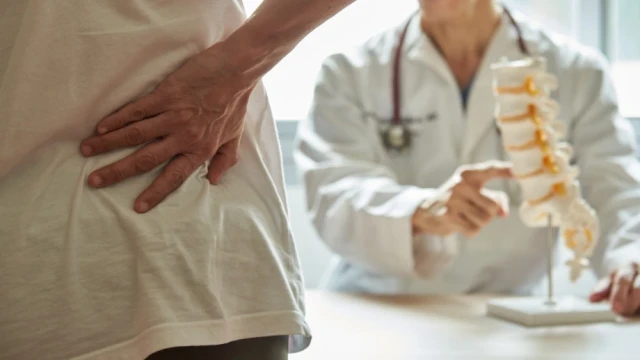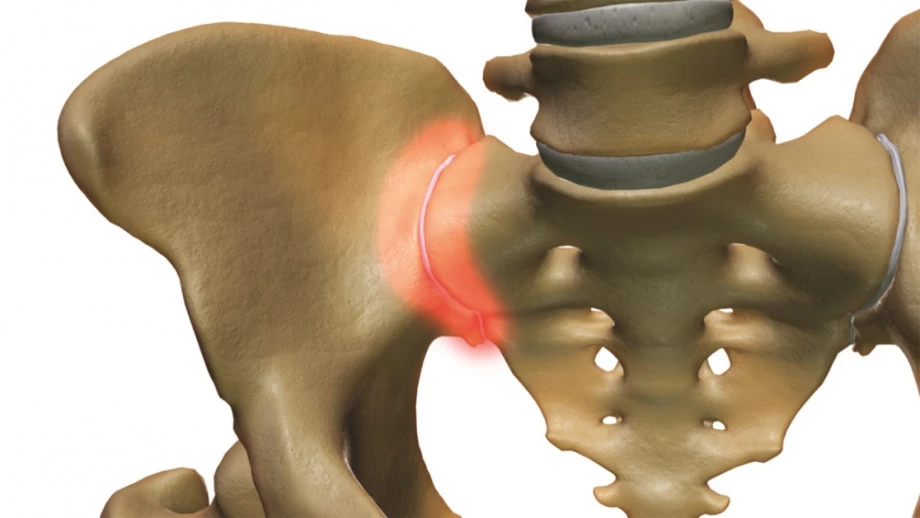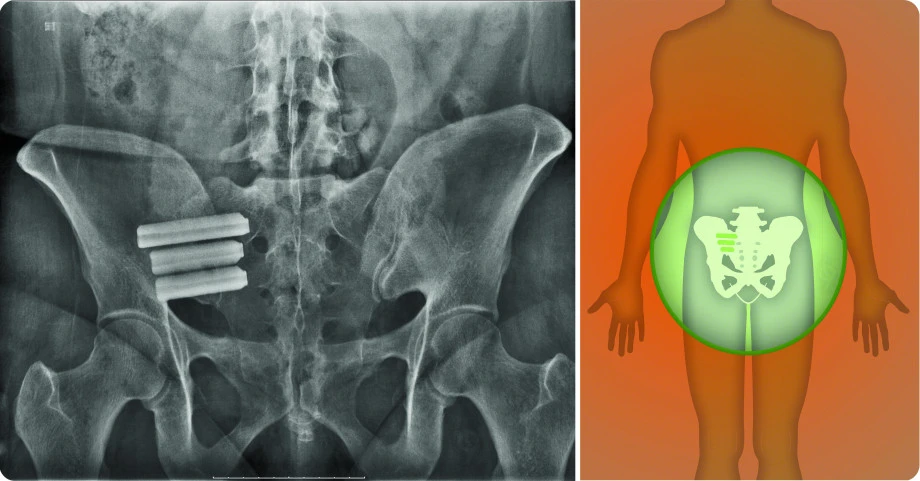
Todd Chapman, MD
The sacroiliac (SI) joint is located in the pelvis and links the iliac bones (pelvis) to the sacrum (lowest part of the spine above the tailbone). It is an essential component for shock absorption to prevent impact force from reaching the spine.
The SI joint can also be a significant cause of low back pain. Like any other joint in the body, the SI joint can become injured and/or become degenerative. When this happens, people can feel pain in their buttock and sometimes in the low back and legs. This is especially true while lifting weights, running, walking or even sleeping on the affected side. According to scientific data it’s common for pain from the SI joint to feel like disc or low back pain. For this reason SI joint disorders should always be considered in low back pain diagnosis.

Chief SI joint pain symptoms can include:
- Low back pain (below L5)
- Pelvis/buttock pain
- Hip/groin/thigh pain
- Sensation of lower extremity pain, numbness, tingling, weakness
- Sitting problems including unable to sit for long periods or pain sitting on one side
- Pain with position changes or transitional motions (i.e., sit to stand)
- Poor sleep habits due to pain
- Feeling of leg giving way to buckling
Making a diagnosis:
A variety of tests performed during a physical examination may help reveal the SI joint as the cause of your symptoms, including X-rays, CT scan or MRI. The most relied-upon method to accurately determine whether the SI joint is the cause of your low back pain symptoms is to inject the SI joint with a local anesthetic. The injection will be delivered under either X-ray or CT guidance to verify accurate placement of the needle in the SI joint.
If your symptoms are decreased by at least 50%, it can be concluded that the SI joint is either the source of or a major contributor to your low back pain. It the level of pain does not change after SI joint injection, it is less likely that the SI joint is the cause of your low back pain. If the level of pain does not change after SI joint injection, it is less likely that the SI joint is the cause of your low back pain.

Treatment options
Once the SI joint is confirmed as the cause of your symptoms, treatment can begin. Some patients respond to physical therapy, use of oral medications, or injection therapy. These treatments are often performed repetitively, and frequently symptom improvement using these therapies is temporary. At this point you and your surgeon may consider other options including minimally invasive surgery.
SI Joint Fusion with the iFuse Implant System®
The iFuse Implant System is designed to provide stabilization and fusion for certain Si joint disorders. This is accomplished by inserting triangular-shaped titanium implants across the sacroiliac joint to maximize post-surgical stability and weight-bearing capacity. The procedure is done through a small incision and takes about an hour. Multiple published studies on iFuse have documented procedure safety and effectiveness.
Todd M. Chapman, Jr., MD is a spine surgeon with the OrthoCarolina Spine Center
The iFuse Implant System® is intended for sacroiliac fusion for conditions including sacroiliac joint dysfunction that is a direct result of sacroiliac joint disruption and degenerative sacroiliitis. This includes conditions whose symptoms began during pregnancy or in the peripartum period and have persisted postpartum for more than six months. Clinical studies have demonstrated that treatment with the iFuse Implant System improved pain, patient function, and quality of life at 12 months post-implantation. There are potential risks associated with the iFuse Implant System. It may not be appropriate for all patients and all patients may not benefit. For more information about the risks, visit www.si-bone.com/risks.
Back




Leave a Comment